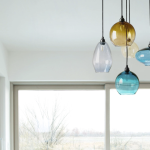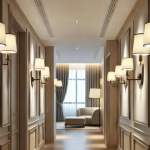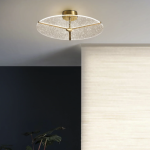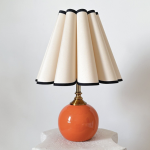Introduction
The industrial lamp is one of the most innovative and trendy lamp styles today that perfectly combines design with functionality. These lamps are often associated with industrial style decor, but they can also fit nicely into other design schemes such as vintage or modern. The mix of metal and exposed bulbs can create a bold and striking contrast in any interior space. This article explores the characteristics, history, and types of industrial lamps.
Characteristics of Industrial Lamps
Industrial lamps are mostly characterized by their materials, shapes, and functionalities. The following are some of the distinguishing features of industrial lamps:
Materials
The most common materials for industrial lamps include metal, concrete, glass, and exposed bulbs. Metal is the most predominant material and often the focus of the lamp’s design. The metal finish can vary from brushed stainless steel to aged brass to give a vintage look. Industrial lamps are often made from recycled metal, making them eco-friendly.
Shapes
Industrial lamps come in different shapes and sizes, but the most common design features a long and adjustable arm that attaches to a base. The arms are usually made from metal piping or rods that can be adjusted to different positions to provide focused light where it’s needed.
Functionalities
Most industrial lamps are designed to provide functional lighting for specific tasks, such as task lighting for reading or working. The bulbs are usually exposed, which gives off brighter light and illuminates a larger area. The light strongly focuses on the subject, making it easier to read or work. Some industrial lamps can also be used for ambient lighting to create a relaxing atmosphere.
History of Industrial Lamps
Industrial lamps came to life in the late 19th century when electricity was first introduced. The first lamps were a combination of metal bases and exposed bulbs, known as the Edison bulb. The design was straightforward yet functional, quickly making industrial lamps a go-to choice for factories and warehouses.
The lamps’ popularity grew in the early 20th century when architect Frank Lloyd Wright started using them in his designs. It wasn’t long before other architects and designers took notice and began to incorporate industrial lamps into their work. Today, the demand for industrial lamps has increased as more people are drawn to their raw and unique features.
Types of Industrial Lamps
As industrial lamps have grown in popularity, designers have created various types to suit different decorating styles. Below are some of the most popular types of industrial lamps.
Pendant Lamps
Pendant lamps are one of the most popular types of industrial lamps, frequently used in the kitchen, dining room, or study. They usually hang from the ceiling, providing warm ambient light.
Floor Lamps
Floor lamps are another popular type of industrial lamp that helps elevate a room’s ambiance. They are often adjustable and have a movable arm that makes them ideal for reading or working.
Table Lamps
Table lamps are a go-to choice for a variety of rooms, providing soft lighting and adding to the industrial ambiance. They are usually smaller than floor lamps and are more focused for specific tasks like reading, writing, or working on a computer.
Conclusion
Industrial lamps have become one of the must-have lamp styles for those looking to add a raw and unique feel to their interior spaces. They are not only stylish but also functional, making them an essential tool for different tasks in the home or workspace. Regardless of the type of industrial lamp you choose, it’s guaranteed to add a touch of character and sophistication to your decor style.
References:
– Webb, M. (2021). Industrial Lamps Make a Statement in Any Home. https://www.thespruce.com/industrial-lighting-fixtures-and-lamps-1391627
– Houzz. (2021). How to Choose the Perfect Industrial Lamp. https://www.houzz.com/magazine/how-to-choose-the-perfect-industrial-lamp-stsetivw-vs~116709166







